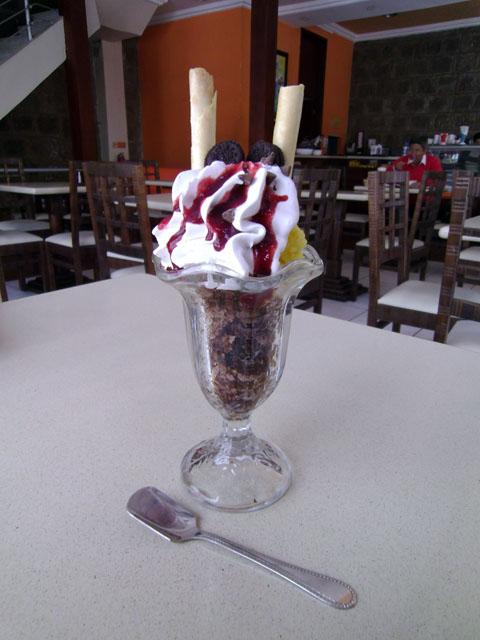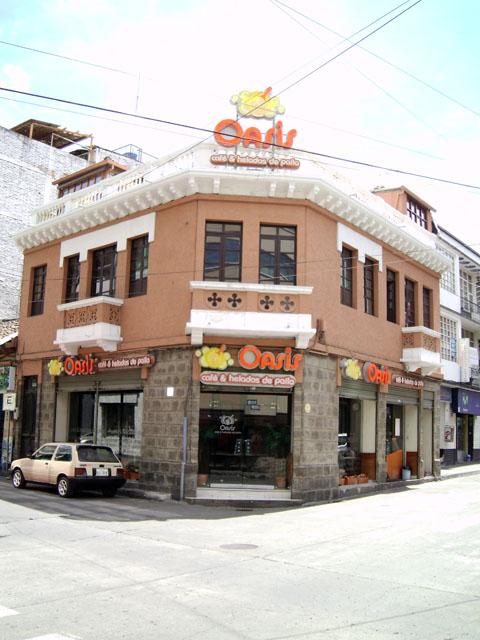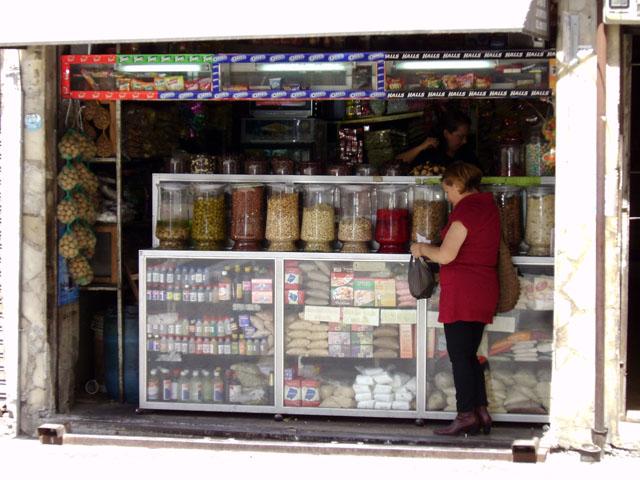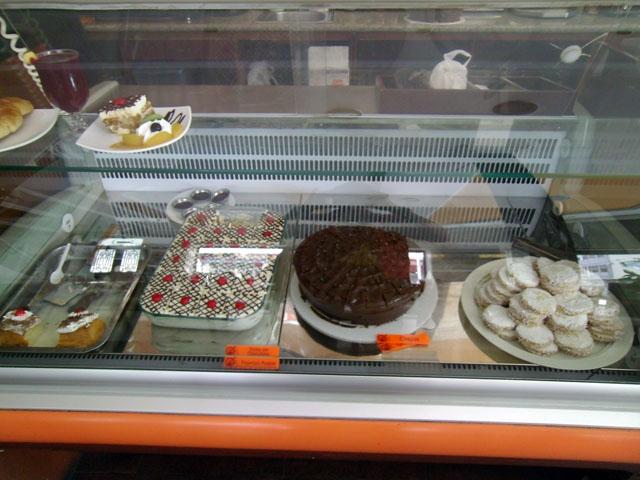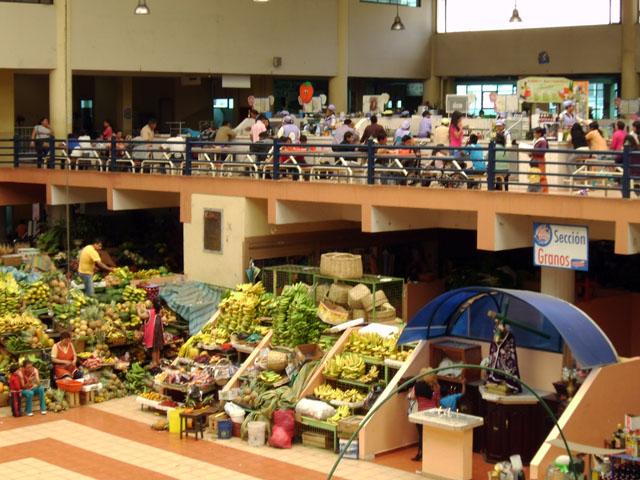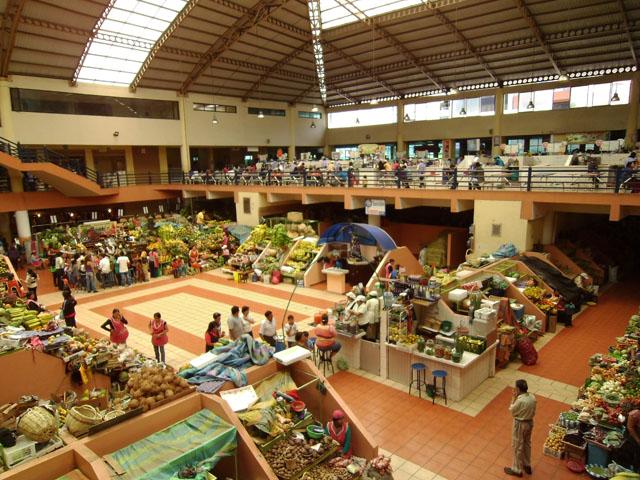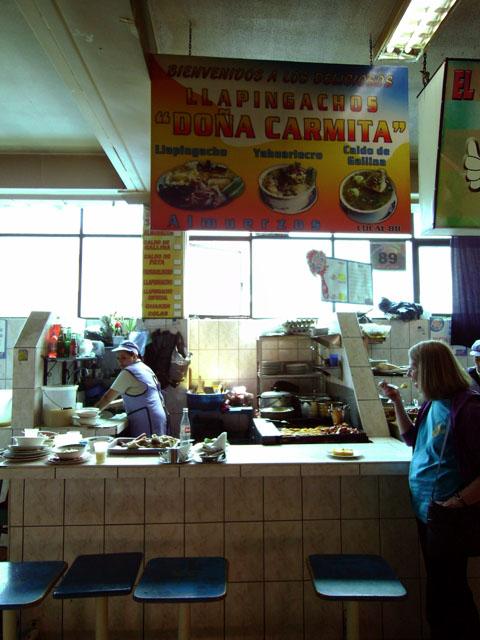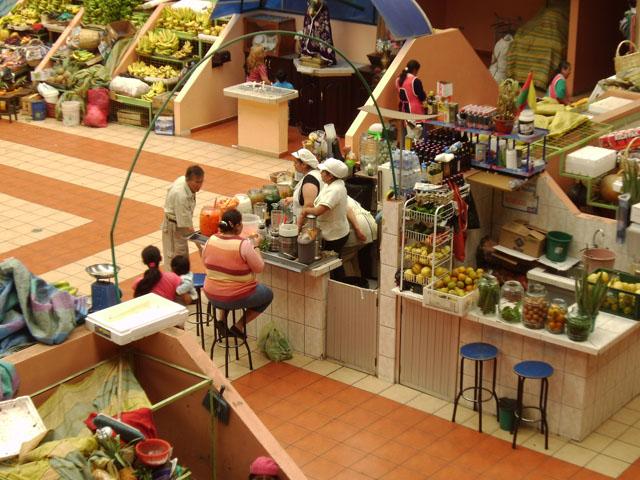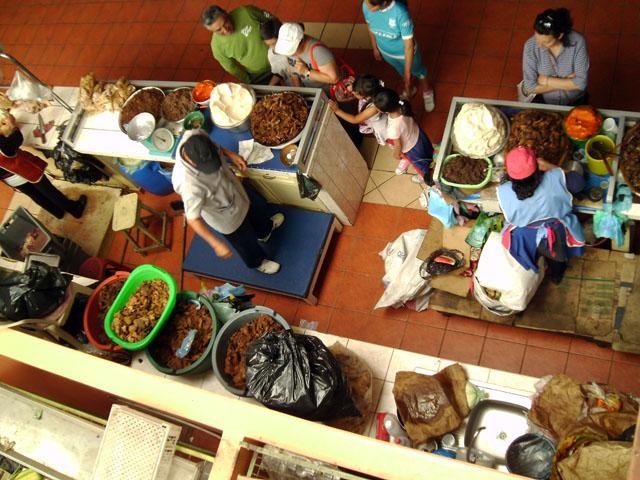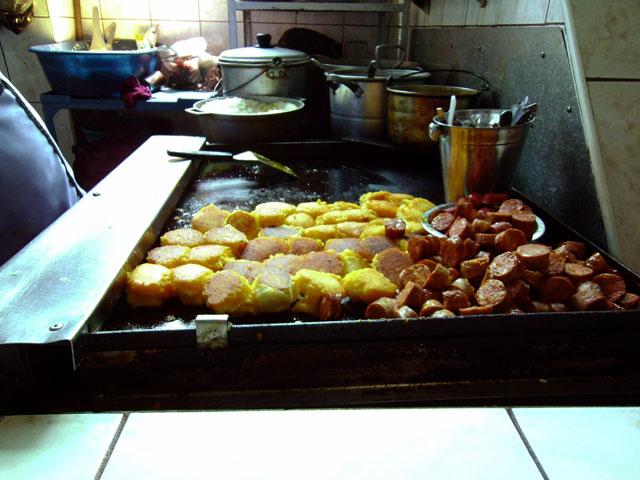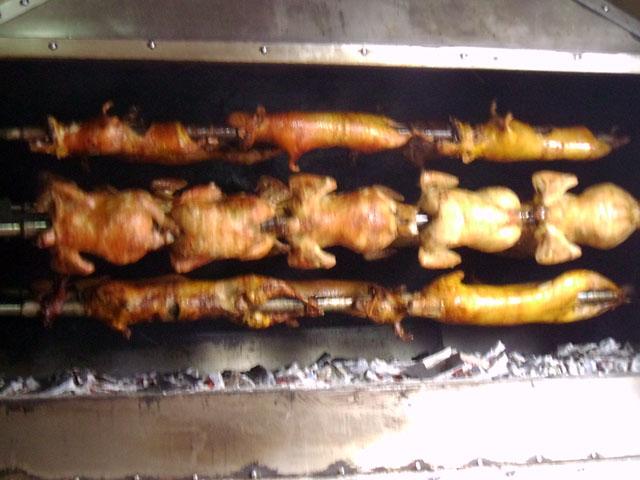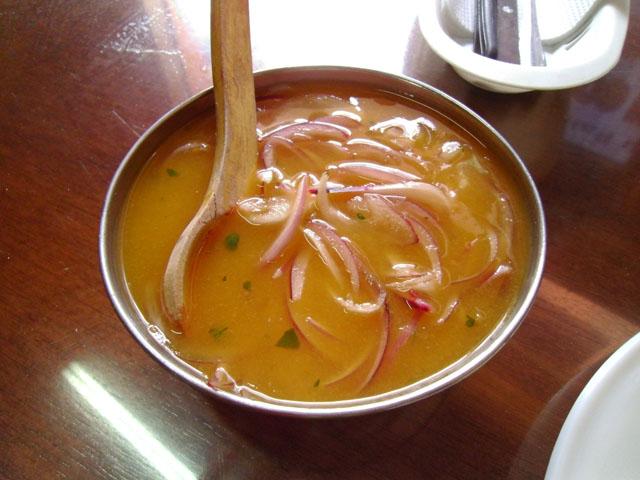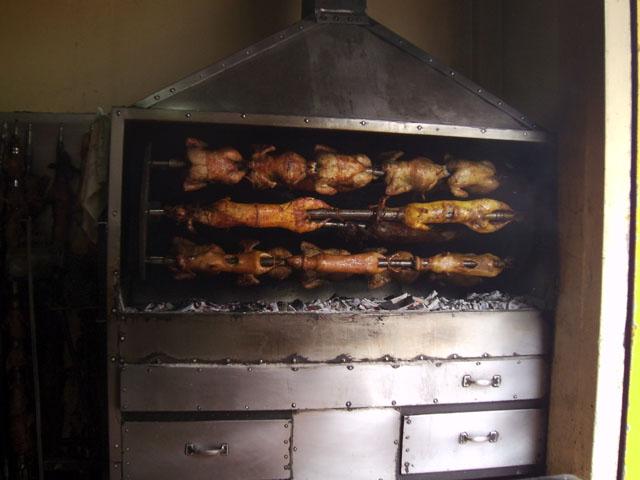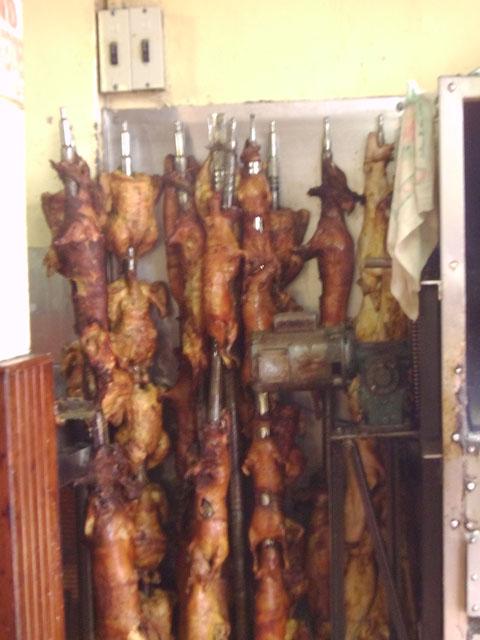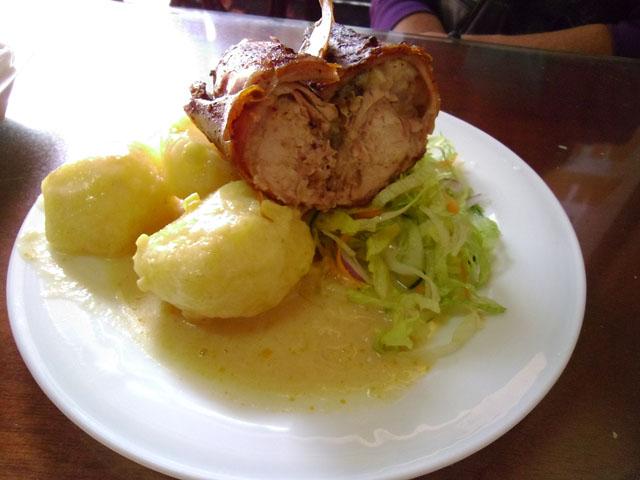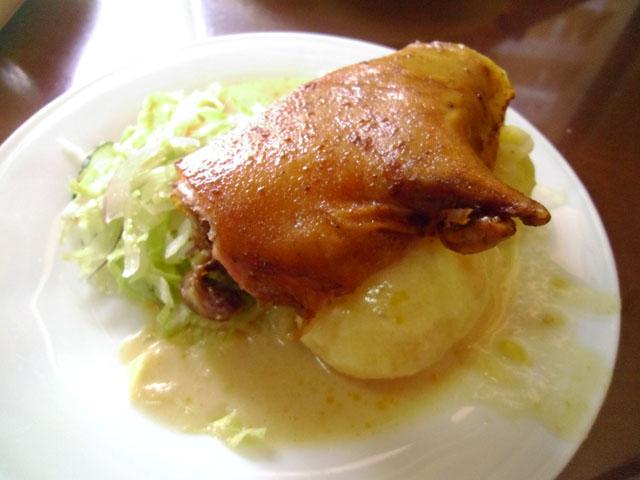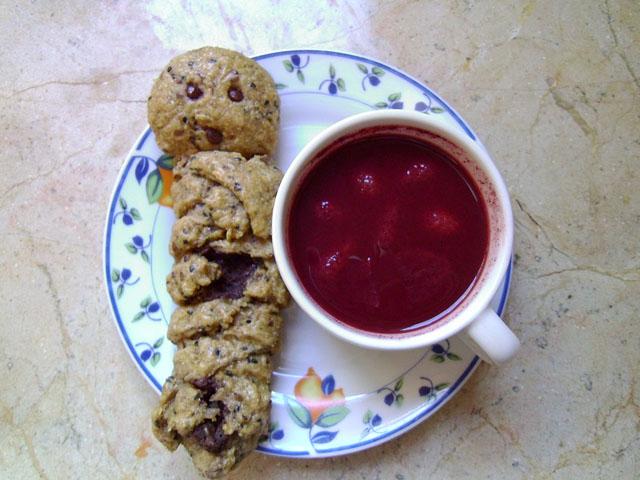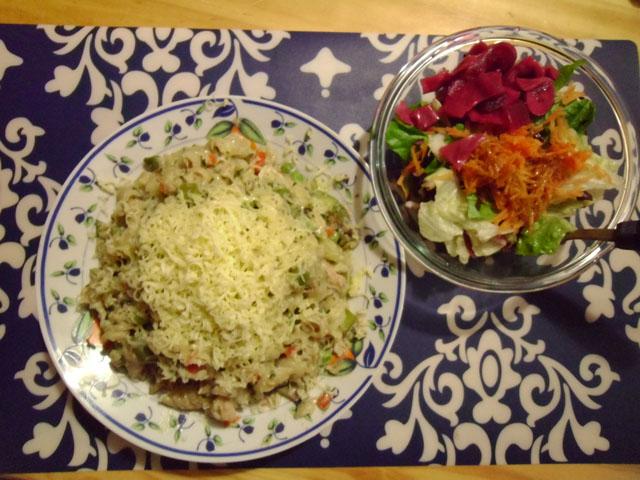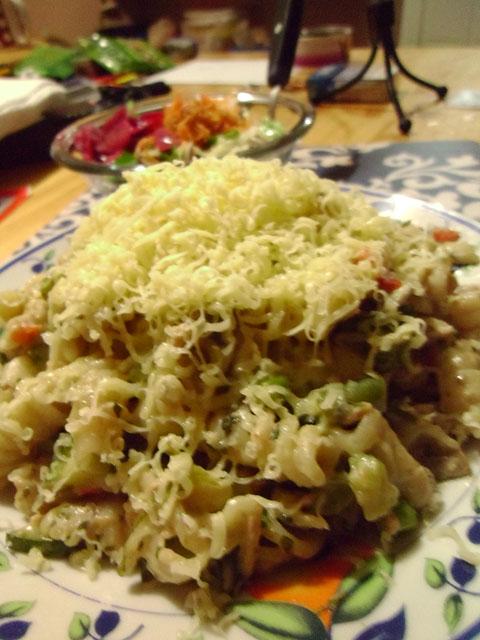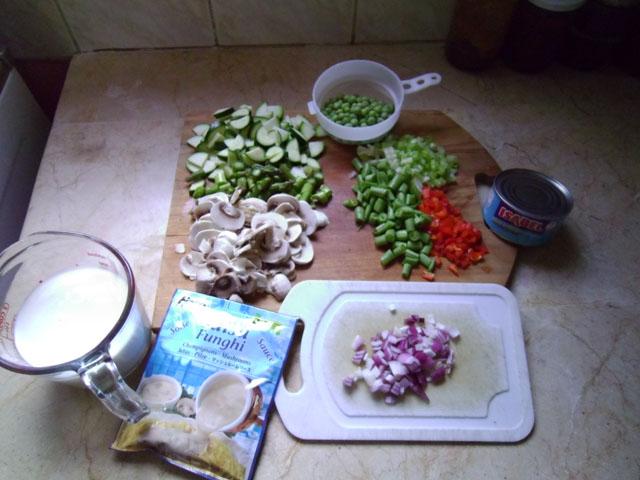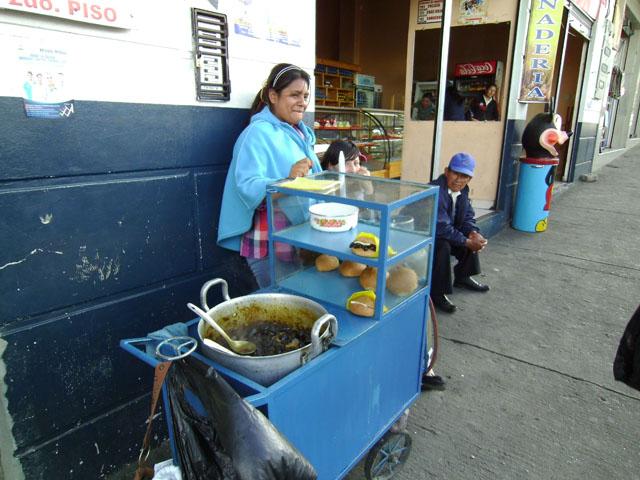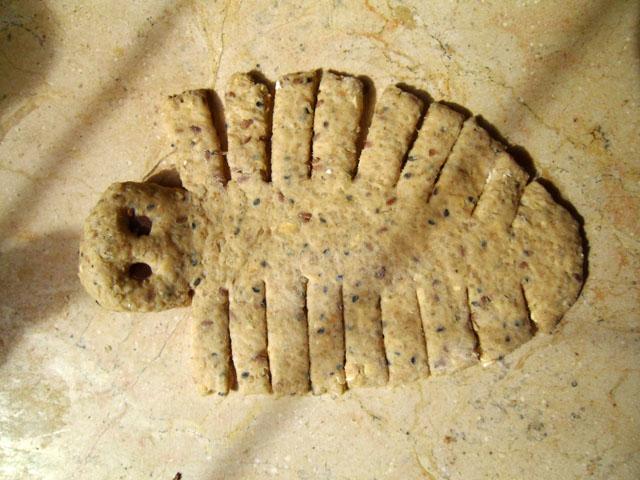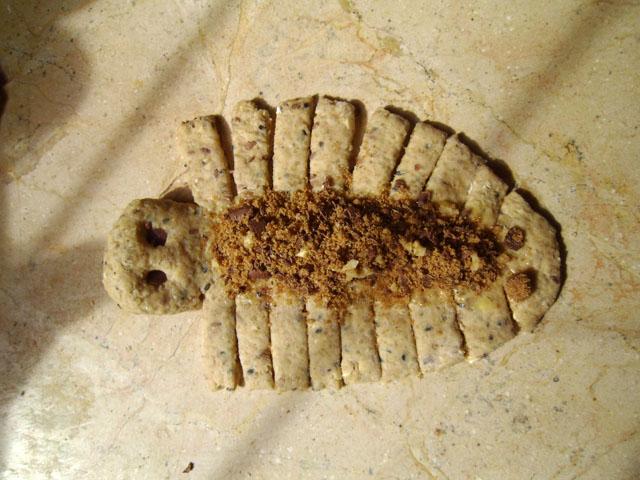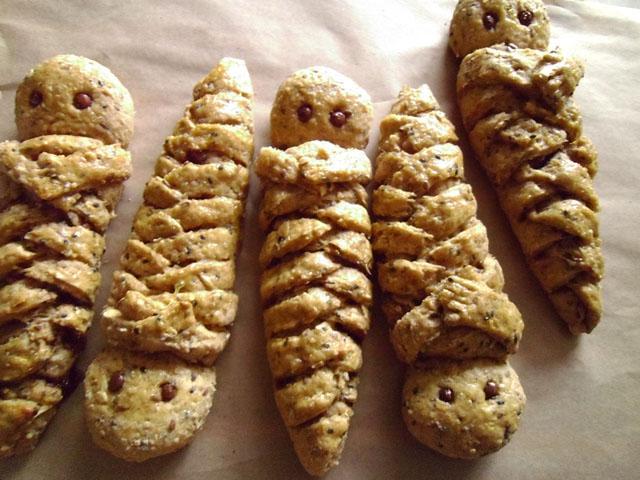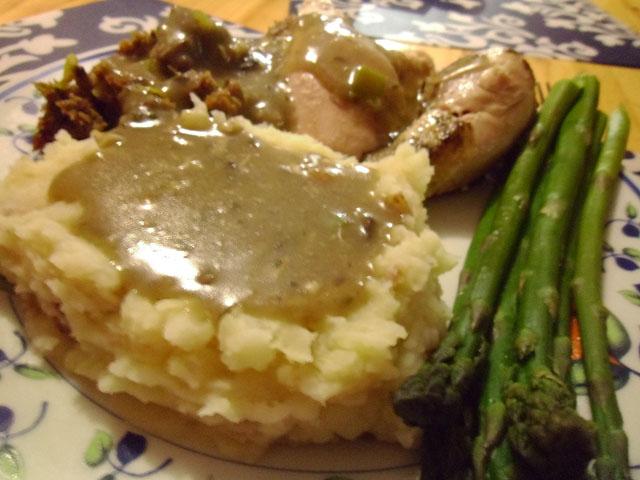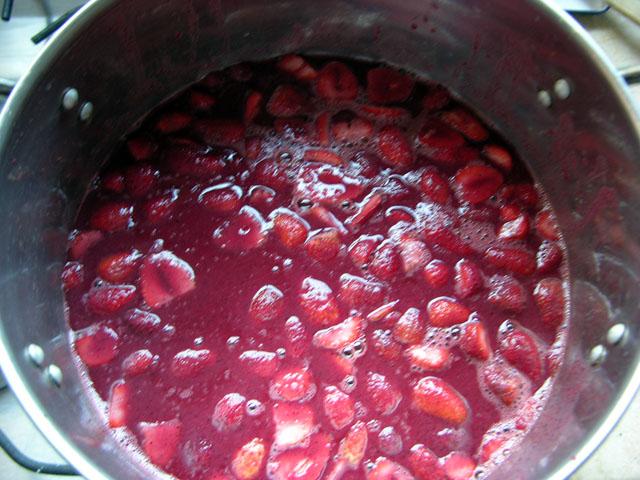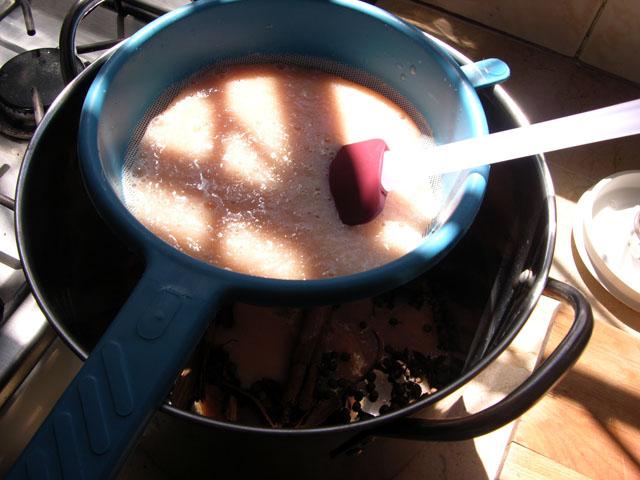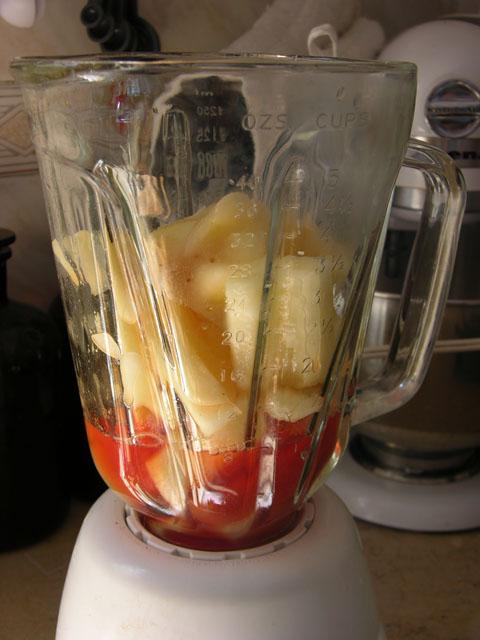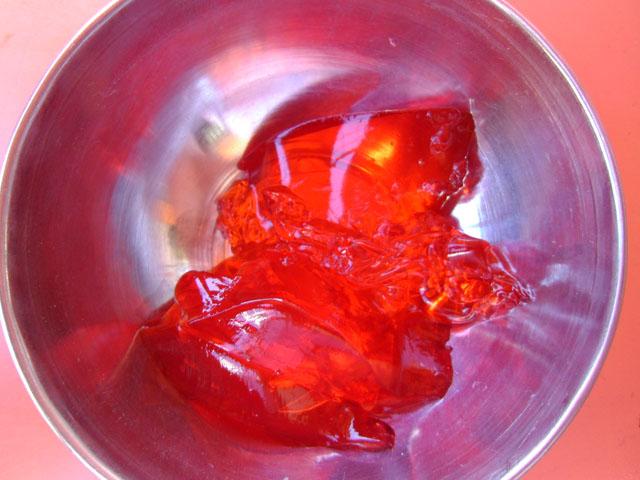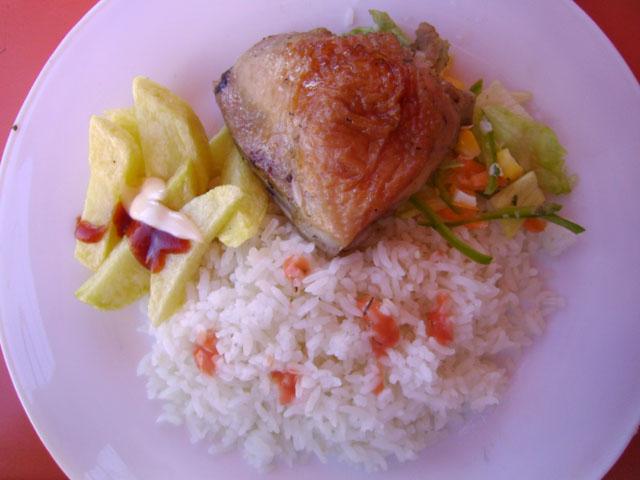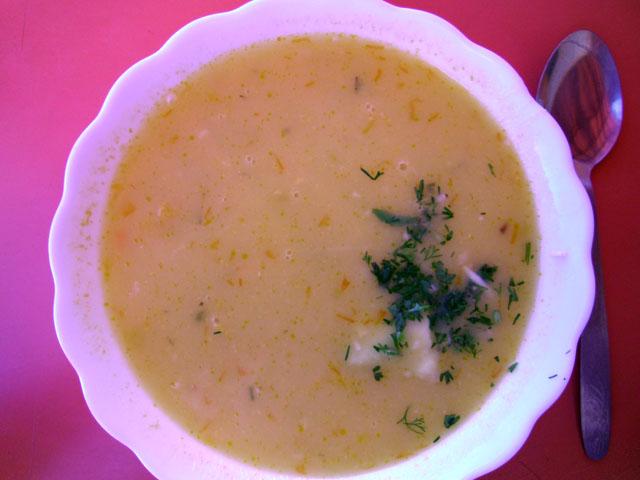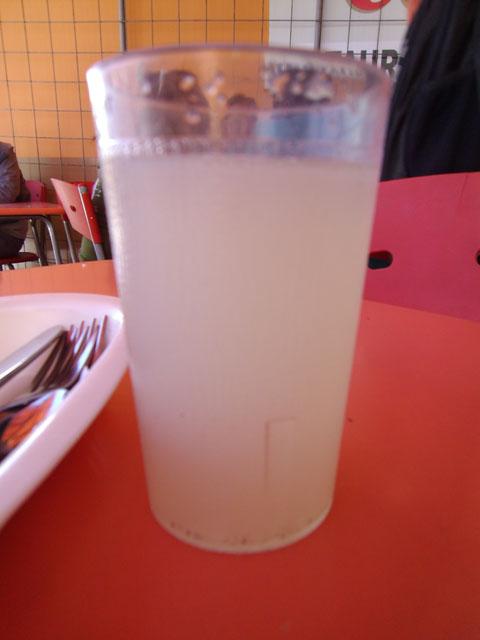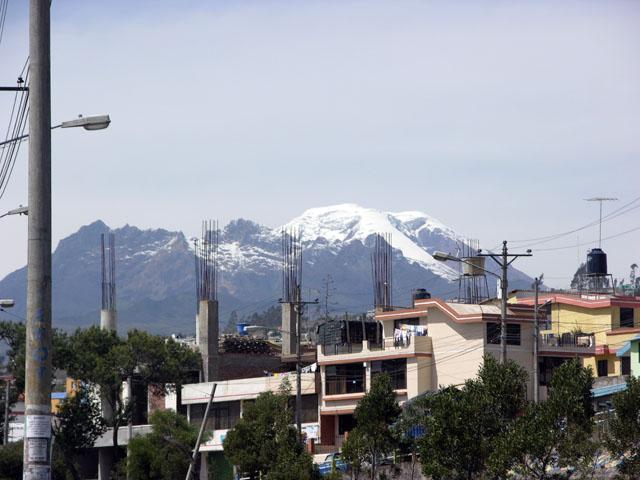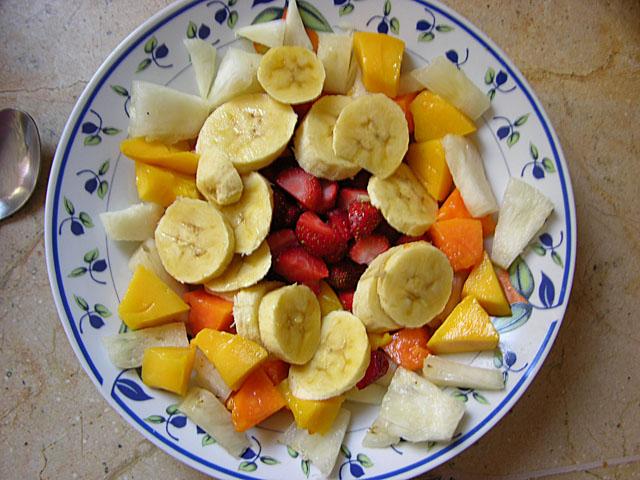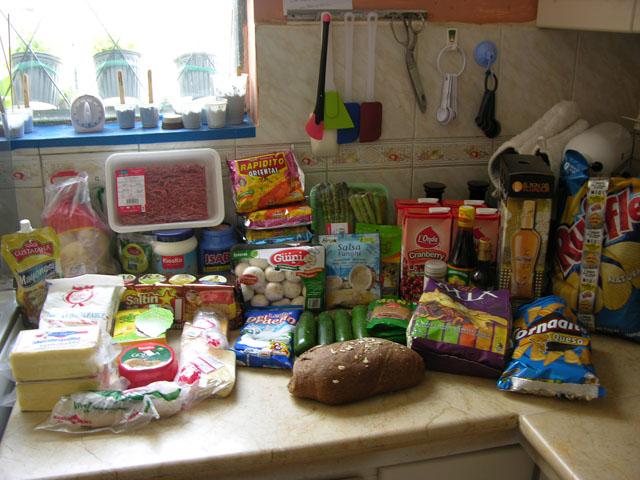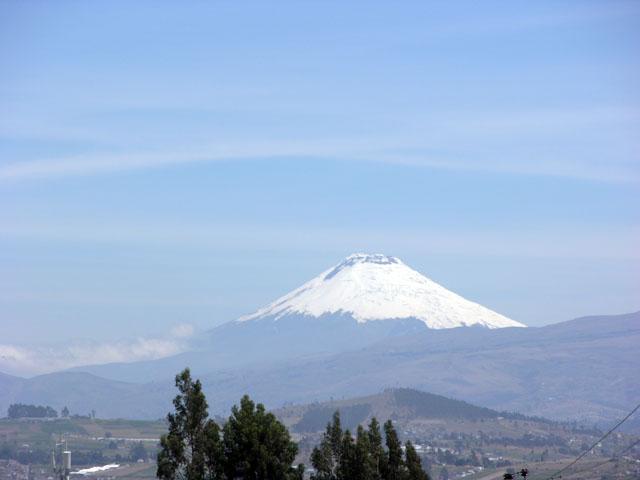-
Posts
2,383 -
Joined
-
Last visited
Content Type
Profiles
Forums
Store
Help Articles
Everything posted by Panaderia Canadiense
-
If it's a fine powder, it won't re-harden or form lumps unless exposed to humidity. Keep it in a ziplock and you're good to go.
-

eG Food Blog: Panaderia Canadiense (2011)
Panaderia Canadiense replied to a topic in Food Traditions & Culture
I do make llapingachos when I've got leftover mashed potatoes, but mine never quite measure up to the ones at the Modelo - I think I might be using a different kind of potato. There are about 15 varieties at the market on any given day, so it's entirely possible. Essence of coffee is added to the milk until the beverage is the right colour for you (if you drink coffee with milk, you know what I'm talking about.) It's extremely strong and a little goes a long way. -

eG Food Blog: Panaderia Canadiense (2011)
Panaderia Canadiense replied to a topic in Food Traditions & Culture
Distilled essence of coffee is what happens when you brew 1 lb of beans in 2 L of water, then reduce over very low flame (they sell special alembic setups for it here) until it's a light syrup. It's meant to be drunk, but is also used in some recipes - most notably as a bass note in the candied figs. Cuisine here is a study in contrasts - and I chose the ice-cream flavours for that sundae out of the 28 available today. Peaches in syrup is a very sweet flavour and the peach in it is very up-front, and walnut is incredibly subtle, but together with the chocolate cake (which is also a very different texture) they marry quite well. I should mention that all that lunching gave Mom and I what we refer to as "food baby" - we were so stuffed that we looked vaguely pregnant... -

eG Food Blog: Panaderia Canadiense (2011)
Panaderia Canadiense replied to a topic in Food Traditions & Culture
Now completely stuffed, it was time for a bit of shopping before dessert. Spice Bazaar, run by Elsa, is where we buy nutmeg with the mace still on it, dried fruits, sunflower seeds, and macadamia nuts. After that, it was time to head for Oasis, which is Ambato's longest-running Heladeria and Cafeteria (here, the word "Cafeteria" is equal to a Cafe or Coffeeshop in North American terms.) It's been in the same spot for more than 50 years, and serves some of the best Helado de Paila available indoors. It's also one of the few spots in Ambato where one can get Cafe Esencia - distilled essence of coffee with hot milk. The Helado counter. Oasis boasts 24 permanent flavours and up to 10 seasonal ones. There are the standbys - chocolate, vanilla, and strawberry, but also exotics like Taxo (banana passionfruit), Mango, Mandarine, Chirimoya, and Guayabana (soursop). There's also usually Tiramisu, Cappuccino, and Crema (straight cream). All of these are handmade Helado de Paila. Oasis also offers desserts - including their signature Tres Leches. However, since we were already stuffed, Mom went for Cafe con Leche (the Cafe Esencia mentioned above), and I had the Copa Ambato, which is two flavours of ice cream over warm chocolate cake crumbles, with cream, mora syrup, oreo cookies, and cookie flutes. The two flavours I chose were Durazno en Almibar (peaches in syrup) and Nuez (walnut). -

eG Food Blog: Panaderia Canadiense (2011)
Panaderia Canadiense replied to a topic in Food Traditions & Culture
After the Cuy, we decided to head to the Mercado Modelo, a few blocks away, for some Llapingachos. First, a bit about the market, and then a bit more about the Llapingachos. The Mercado Modelo is one of about 6 permanent daily farmer's markets in Ambato; it serves the northern portion of the downtown core. Unlike the Gran Feria Libre that I shop at on Mondays, the permanent markets are open seven days a week. However, the prices here are a bit higher, and you're definitely buying from middlemen. This said, when you run out of something midweek, this is where to come to buy more. The Modelo has two floors - the bottom is produce, meat, and dry goods, and upstairs is small eateries and clothing. The Modelo is unique among the markets for separating the meat sellers from the sellers of lard, achiote-lard, and prepared pig products. The main floor is also home to the Zumadores - juicers who use whole fruits in western-style juicing machines. They're who you visit when you have a craving for celery and carrot juices. However, we were here for Llapingachos (ya-pin-GA-chos), a type of fried potato pancake that's part of Ambato's signature dishes. There are a number of sellers of this delicacy up on the second floor; we chose Doña Carmita's because they looked and smelled fantastic, and because we've eaten here before. Llapingachos are cooked on a plancha in achiote oil and the fat from chunks of chorizo (which are part of the full Llapingacho platter) The full plate, modeled here by Doña Carmita herself, includes four Llapingachos, half an avocado, some salad, chorizo, chunks of lechon horneado (roast suckling pig) and a fried egg. However, since we were already full of Cuy and Conejo, we opted for a simpler plate of just four Llapingachos. After that, it was obviously time for more fresh juice! We headed over to the upstairs juice bank. Here, we decided on fresh coconut juice, which was blended up before our eyes. The jar in the background contains Com'y Bebe (eat 'n drink), a sort of fruit-salad in juice. Of course, after we were halfway into our 75 cent giant glass of juice, we recalled that at juice counters you can order blends. Duh. Coconut and Mora is one of Mom's favourites, and the girls behind the counter will blend to whatever proportions you wish. -

eG Food Blog: Panaderia Canadiense (2011)
Panaderia Canadiense replied to a topic in Food Traditions & Culture
Success! Lunch today was the (sometimes epic) search for a good plate of Cuy for me, and a plate of Conejo (Rabbit) for Mom. Happily, Asadero Los Cuyes downtown was open. For those who don't know, a Cuy (Coo-ee) is known to the English-speaking world as a Guinea Pig (though why I'm not entirely sure - they're not native to Guinea or to the Guayanas). It's the traditional protein animal of the Andean nations, and there are specialized breeders here that are dedicated to producing large, meaty Cuyes for the restaurant trade. The normal way to cook a Cuy is to roast it over hot charcoal - this can be done with a Cuy on a stick (most common in rural areas) or in large rotisseries designed specifically for this purpose. Asadero Los Cuyes uses their rotisserie for Cuy, Conejo and chickens - the typical load is 4 rabbits, 6 cuyes, and 10 chickens. The smoke is vented to the street, where its scent entices diners. We took the last available table in the restaurant, which was right across from the rotisserie. This meant that we got a bit of ash blown towards us when busses passed outside, but it also made for some great pictures! Finished spits are stored next to the rotisserie; as the meat is ordered, it's reheated on a small grill over the coals. Although Sopa de Legumbras (rich vegetable soup) was the starter of the day, we opted to skip the soup (for reasons that will become obvious in a moment) and go straight to the main course, 1/4 beastie with creamy peanut-sauce potatoes (the traditional accompaniment) and salad. Here's my Cuy (it came with its little paw still attached, but happily this time not its head, which kind of creeps me out.) Cuy has a mildly gamey taste similar to wild rabbit, is very rich (think of a fat level comparable to goose), and once you get past the North American feeling that it's a pet, it's delicious. And here's Mom's rabbit - it looks like her quarter was the portion just before the haunch. It was incredibly meaty. Aji at this restaurant was fiercely spicy to offset the richness of the Cuy. Not pictured is the fresh white-pineapple juice that came with the plates. For two people, this portion of lunch came to $8.50. -
Are you saying "tuna fish, guacamole, with queso fresco"? Or do you have a recipe for tuna fish guacamole. Because if you do, I'd like to know more about it. Nope, I'm saying "tuna fish guacamole, with queso fresco." Tuna-based guacamole begins with a tin of chunk-light tuna, drained of its water or oil. This goes into the bowl with one or two nicely ripe avocadoes, a squirt of mayo (home-made preferred), and finely chopped dill pickles or dilled carrots. Squeeze a lime into that, and mash until smooth-ish. Add fresh chopped basil, parsely, and toronjil (lemon verbena), and stir again. Taste. If it seems to be lacking a certain something, try a couple of drips of Worcestershire sauce. Spread that on your fresh bread of choice, slap on the cheese and tomato, salt, and you're good to go!
-

eG Food Blog: Panaderia Canadiense (2011)
Panaderia Canadiense replied to a topic in Food Traditions & Culture
Yeah, but with a bakery specializing in the use of real butter, it's a wonder I'm able to maintain my girlish figure! -

eG Food Blog: Panaderia Canadiense (2011)
Panaderia Canadiense replied to a topic in Food Traditions & Culture
Breakfast today was Colada and a Guagua, the way they're meant to be eaten - in a leisurely manner, and together. This is one of the exploded black chocolate truffle with walnut Guaguas. Today's adventures will include searching for a tasty Cuy downtown, shopping for nuts and spices, and a visit to the city's oldest and best cafe and heladeria - The Oasis. -

eG Food Blog: Panaderia Canadiense (2011)
Panaderia Canadiense replied to a topic in Food Traditions & Culture
Dinner last night was what we affectionately call "Lazy Bastard Tuna Casserole" - it's made in the cast-iron frypan on the stovetop, and as such takes much less time and we can control how tuna-y it tastes as well. Starting ingredients: In the pan: In bowls (with a nice green salad and some spicy pickled cabbage of my own design) -

eG Food Blog: Panaderia Canadiense (2011)
Panaderia Canadiense replied to a topic in Food Traditions & Culture
Kay, I'm not sure where you are, but you can fly to Ecuador from Newark return for about $600 on the national carrier of the Galapagos, AeroGal.... -

eG Food Blog: Panaderia Canadiense (2011)
Panaderia Canadiense replied to a topic in Food Traditions & Culture
And here's the fig cart where I bought lunch. I was hoping that I wasn't too late in the season for this - figs normally disappear around mid to late October. What's going on here is an uniquely Ecuadorian take on them, too. The figs are scored and stewed in heavy panela and spice syrup in a big pot right on the cart (propane burner underneath), then scooped out hot into fresh bread with queso fresco, and a bit of sauce to make it nice and gooey-sticky. A fig sandwich costs 60 cents, contains three large figs, and is absolutely amazing - unfortunately, I snarfed mine too fast to get a picture (selling Guaguas de Pan on the street is hungry work!), but here's the cart. -

eG Food Blog: Panaderia Canadiense (2011)
Panaderia Canadiense replied to a topic in Food Traditions & Culture
Alrighty, let's try this again... Yes! We have uploader! I'm skipping the dough method for the Guaguas - it's the same as the bread I made on Sunday. Here's how a Guagua de Pan is formed (or at least one of the methods). I start with a 4 oz ball of dough, and roll it out into a rough oval about 1/8" thick. About 1/4 to 1/3 of this becomes the head, and the remainder is stripped for braiding. Then the center strip of dough is brushed with butter and the granular filling added in - in this case, a mix of grated couberture semiamargo chocolate, cinnamon, chopped walnuts, and panela. Chocolate chips are pressed into the head by way of eyes. 4 oz babies made of 7-grain dough take 25 minutes to bake, with a light egg glaze. -

eG Food Blog: Panaderia Canadiense (2011)
Panaderia Canadiense replied to a topic in Food Traditions & Culture
Yup, we're on the USD. We'll see for how long.... I'm sorry I haven't given y'all a substantial update before now, folks. Today was occupied with the elaboration and selling of Guaguas de Pan, which are the second component of the traditional foods for Dia de los Difuntos. My breakfast consisted of "quality assurance" guaguas - the ones that had hemorrhaged filling in the baking process. Continuing the dual tradition, the Guagua represents thanks for the grain harvest and wishes for a good season in the Incan tradition, and the Body of Christ in the Catholic tradition. This is made a bit more disturbing when you note that the traditional filling for Guaguas is either mora or guava jam, so when you bite into one, it bleeds. For the linguistically curious, "guagua" (pronounced wah-wah) is the Kichua word for "baby." The most traditional form of this filled bread is a masa of white corn and quinua flours, filled with guava sweet, and baked in Horno Leña (a wood-fired clay dome oven); hardly anybody makes that type anymore. White bread is now the standard, sadly. I make 7-grain Guaguas with non-traditional fillings - this year's are cinnamon-chocolate-panela with walnuts, stevia peanut butter with raisins (for diabetics), and brandy black chocolate ganache. The most popular with eaters is the cinnamon-chocolate, so I'll be making more accordingly next year. Photos later - the uploader isn't cooperating. That sucks, because I had a hot candied fig sandwich off a cart for lunch, and that's such a neat thing.... -

eG Food Blog: Panaderia Canadiense (2011)
Panaderia Canadiense replied to a topic in Food Traditions & Culture
Blue or Black corn can be eaten on the cob, but it's incredibly starchy and has little other flavour to recommend it - I've grown it and tried it, which is why I can even tell you that. That's why you rarely see it in fresh cobs, but rather in dried kernel or meal/flour forms. Atole sounds like a drink we call Morocho, which is cinnamon and panela water thickened with ground flint corn. -

Want to make Tres Leches Cake (THREE MILKS CAKE)
Panaderia Canadiense replied to a topic in Pastry & Baking
Especially if you base the brittle on panela - the more concentrated that stuff gets, the better it is.... -

eG Food Blog: Panaderia Canadiense (2011)
Panaderia Canadiense replied to a topic in Food Traditions & Culture
Last night's dinner was a simple homecookin' affair - oven-roasted chicken with black bread stuffing, mashed potatoes, gravy, and some token asparagus in order to say there was a vegetable. It's another living, breathing advert for Smell-o-Vision - will somebody please get on that?!?!? -
Whether I soak depends on the olives, for me. For the types that have a lot of salt in the cure, absolutely. My personal favourites at the moment are the tiny, firm black olives that are produced locally from the trees around the Cathedral, cured with a minimum of salt and with mixed herbs and allspices. They're fabulous. In terms of olives that y'all will recognize, Kalamatas, hands down.
-

Tips for almost-following a specific bread recipe
Panaderia Canadiense replied to a topic in Pastry & Baking
If you use bread flour with a high protein content, the key to kneading by hand is to allow to dough to relax for 15-20 minutes when it gets too hard to knead it. It's a slightly longer process, but allowing the relaxation will actually make the bread more tender. -

eG Food Blog: Panaderia Canadiense (2011)
Panaderia Canadiense replied to a topic in Food Traditions & Culture
It depends entirely on how much of the flour you put in - at 1 lb for 7 L of liquid, it's drinkable, pourable, but still thick, kind of like a heavy cream soup. Other chefs use less for a very thin concoction, and others more for something that more closely resembles pudding. It comes down to personal taste. Pink guavas are for juice! As I mentioned above, if you've got a blender and a strainer, you can get rid of those nasty little seeds very easily. To juice guavas in the blender, just skin them and cut them into chunks, then toss them in with some water (you'll be able to balance the water as you go - they'll take more than you think, since they're really really pectin-y), blend until smooth, strain into your juice jug, and you're good to go. The seeds stay behind and you've just got the essential guava goodness. Some people also add panela to guava juice, but when they're perfectly ripe I don't think it's necessary. Once you've got that juice, if you add panela equal to half the mass of the guavas and then reduce the result on the stovetop (slowly) you'll eventually end up with Dulce de Guayaba, a sort of pate de fruit that retains that wonderful flavour and aroma and is shelf-stable - they're the deep red bars in my photos from the melcochero in Baños. -

eG Food Blog: Panaderia Canadiense (2011)
Panaderia Canadiense replied to a topic in Food Traditions & Culture
You're quite welcome, Maggie; I aim to please! Of course, you could always come visit us.... Sylvia - brickle is the term that's been used in my family for roca or brittle for as long as I can remember - I wasn't aware it was a trademark until you pointed it out! We likely had the ice cream as well, or at least Grandpa would have made something similar. -- Today's project ties in with the weeklong celebration of Dia de Los Difuntos in Ecuador. The Day of the Dead here as a Catholic festival also has very strong pre-conquest roots; it coincides with the old Incan festival of fertility and the celebration of the harvest of black corn and of the Mortiños, a small Andean blueberry that grows in the páramos (high altitude areas) of the country. The tradition here is to eat and drink with your dearly deceased during the festival, hold conversations, and update them on the year. All of this, of course, takes place in the cemeteries. There are two traditional dishes for Los Finados (the entire festival week), those being Colada Morada and Guaguas de Pan. I'll talk a bit more about the Guaguas later on, but the main project for this afternoon was the elaboration of the Colada Morada. This is a thickish multiple fruit, herb, and spice drink given its signature colour by black cornmeal and mortiños. The roots go back to the Incan festival, where the drink was made to celebrate the harvest and to offer to Inti (the sun) in hopes of a fruitful harvest in the next year. The Catholics have taken it as a sort of sacramental wine, and in the current theology it represents the blood of Christ. However most Ecuadorians are also aware of the prior meaning, and the festival serves dual purpose. Colada Morada is a multiple-ingredient undertaking. From left to right, beginning in the top left corner, the ingredients are: The Herb Bundle. Sanguarachi (Amaranthus cruentus), Hierba Luisa (lemongrass), Toronjil (Lemon Balm), Orange Leaves, Arrayan (an aromatic Myrtle). Whole Cloves, Star Anise, Ishpingo-bark Cinnamon (Ishpingo being the native cinnamon tree - not true cinnamon in the Ceylon sense, but actually much stronger in flavour), Ishpingos (the flower bracts of the same tree - think of a flavour like strong cloves, black pepper, cinnamon, and add something undefineably Ishpingo). Black panela (the darkest possible). Maracuya (passionfruit), White Pineapple, Naranjilla (a tomato relative with a bitter citrus flavour), White and Pink Guavas, Babaco (papaya relative), Zarzamora (wild Andean blackberry), Mortiño, and finally Frutilla (wild strawberries. My original lessons came from Fidelina, my adopted grannie, who insists that Fresas, or large strawberries, have no soul and therefore no place in Colada.) The herb bundle is separated, washed, and placed in you second-largest stockpot with enough water to cover well, and then set on to boil. I wish at this point that I could attach smells to these posts - the herb bundle fills the house with a most wonderful odour. Once the water is a pale pink to red colour, the herbs are removed from the heat. The fruits, in the meantime, are cut up and skinned (where necessary). Each one is placed in the blender with a bit of the herb water (and in the case of pineapple, guava, and mora, a whole lot of herb water. This is blendered until smooth. I should point out that no matter where you are in the country and completely regardless of social status, every single Ecuadorian household has at least one blender. I've been in kitchens that had no fridge but still had the blender. This is because it's the household's juicer, and that's how important fresh juice is to this culture. Once it's nice and smooth, the fruit juice and pulp are poured into a strainer and strained to remove seeds and coarse pulp. Rinse, lather, repeat, until all you've got left are the Frutillas. These are reserved whole (well, cut into halves). The juices are stirred, the spices added (whole), and the whole pot goes onto the burner. It's heated until it boils, and then the panela is added, all in a lump. This is stirred until it completely dissolves. At this point, I also add an extra branch of Arrayan, because I love the flavour. Then the spices are strained out. Half of the mixture (roughly) is reserved in the smaller of the stockpots, and black corn flour is added and blended (I use an immersion blender) until thick and no longer lumpy. Then the thickened portion is reintroduced to the thinner, and stirred well. The Frutillas are added then, and the mixture is allowed to cool slowly. This hydrates the black corn and thickens the drink. Colada is normally served warm accompanied by bread. -

eG Food Blog: Panaderia Canadiense (2011)
Panaderia Canadiense replied to a topic in Food Traditions & Culture
Correction: the Monday night steak was Top Round. My mistake. -

eG Food Blog: Panaderia Canadiense (2011)
Panaderia Canadiense replied to a topic in Food Traditions & Culture
Lunchtime! Today's gustations were provided by a comedor, Los Tres Juanes, which is just down the street from my house. Tres Juanes is a fairly typical example of this type of restaurant, which serves a fixed menu for a fixed price. Normally there are two main dishes to choose from, and on this occasion there were also two types of soup. Three courses are included in comedor meals - soup, main, and dessert - along with a glass of fresh fruit juice. Comedores are popular, reasonably priced (three courses in Ambato is between $1.75 and $2.00), and almost always excellent, and they're also guaranteed to be packed on any given lunch hour - much more so than more "refined" establishments. This photo doesn't show it (because it happened to be a rare lull when I took it) but normally one is lucky to get a table at this restaurant - the food is excellent and inexpensive, and it's located right across from the Technical University campus. This tends to ensure that it's always packed, and at peak hours it's not uncommon for there to be a lineup for tables. Today's choices of soup were Aguado de Pollo (chicken and cracked rice; a thin, light soup) or Locro de Queso (thick, rich potato and cheese soup with avocado). Both Mom and I opted for the Locro, which is one of our favourites. The Plato Fuerte options were Medallones de Lomo (Medallions of Steak) or Pollo al Horno (Roast Chicken) - we both opted for the chicken since last night's dinner was so beefy. What really shines at Tres Juanes is the seasoning - the chicken was baked in some sort of lovely subtle adobo (pre-dressing) that included leek, shallot, and cilantro. Aji is the main condiment on the table at comedores, rather than salt (food here is normally perfectly salted when it leaves the kitchen). It varies in heat (an aji itself is a hot pepper similar to a chili) according to the chef and the type of food being served. At Tres Juanes today, it's milder and based on red Tomate de Arbol. The fresh juice today was Babaco (very hard to explain, but bear with me - it's an ingredient in today's project and I'll be posting photos later), which is a relative of papaya. This is a very refreshing juice, with a slightly sparkling flavour. And for postre (dessert), well, there's always room for jello! We figured the flavour was Rascherry. Comedor desserts are generally small, simple portions of something sweet, to clear the palate and settle the stomach after the heavier flavours of the Plato Fuerte. -

eG Food Blog: Panaderia Canadiense (2011)
Panaderia Canadiense replied to a topic in Food Traditions & Culture
Julies have strong orange flesh with very little fibre (just enough to hold their shape when cut), and the flavour is intense and slightly floral with a strong mango undertone and pleasant final hints of pine. They are among my favourite mangoes. White pineapples, which are seedy (hummingbirds are the natural pollinator, and we've got tons of them), are less acidic and slightly sweeter than 'Hawaiian' pineapples (gold fleshed types). The core is less woody, and the whole fruit is juicier. If you asked an Ecuadorian, they'd tell you that white pineapples are for juicing and gold ones are for eating. Personally, I think it's the other way on. Cut it up and chew on it, or cut it into 1 foot pieces, hollow out some indentations, and bake coconut-curry shrimp on it. The other thing you can do is to cut the woody part off of the outside and boil the remaining portions in a bit of water to get neat cane syrup. This can then be reduced to form a sort of bastard form of panela, or used as a simple syrup. Yup - cane fibre is one of nature's toothbrushes! It's the word I use to translate it. Those things are called Dulce de Mani (peanut sweets) locally. Mora are Andean blackberries; Mora syrup is a heavy panela and juice syrup distilled from them. It's used on ice cream, usually. -

eG Food Blog: Panaderia Canadiense (2011)
Panaderia Canadiense replied to a topic in Food Traditions & Culture
Great! Now that we've caught up with yesterday, let's see a bit of today.... Breakfast was a 5-fruit salad with fresh yogurt and Mom's handmade granola (good granola is quite hard to find here). The five fruits, for the curious, are white pineapple, red papaya, Julie mango, strawberries, and Orito banana. After breakfast we walked down to the MegaMaxi, our local western-style supermarket. It's one of those magical clear days that the city sometimes gets, and we were able to see both Chimborazo and more distant Cotopaxi. MegaMaxi were party poopers, though - they didn't want me to take pictures in the store. So all I can show you is the haul, which came to $88 and some odd cents.



